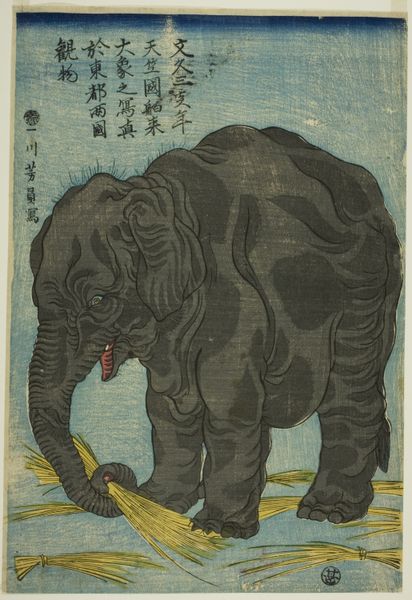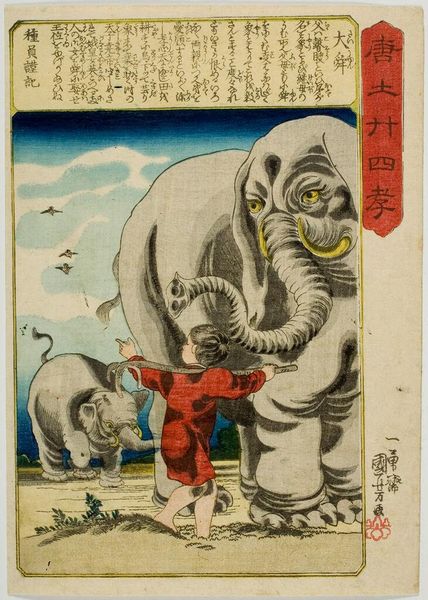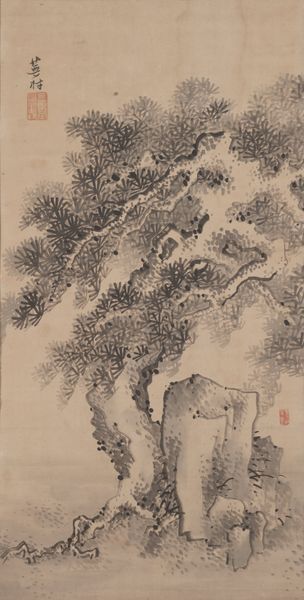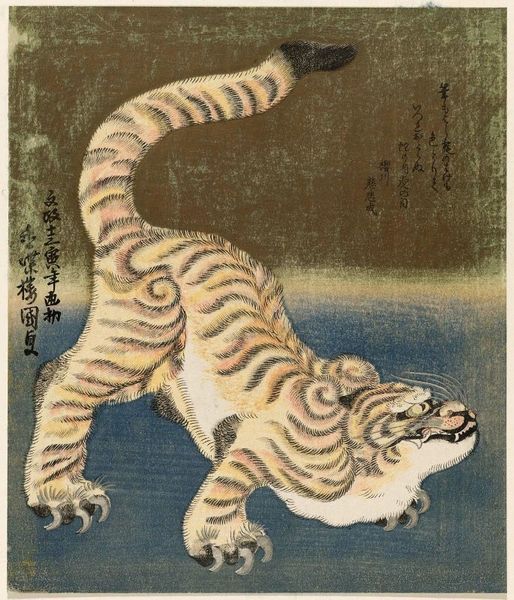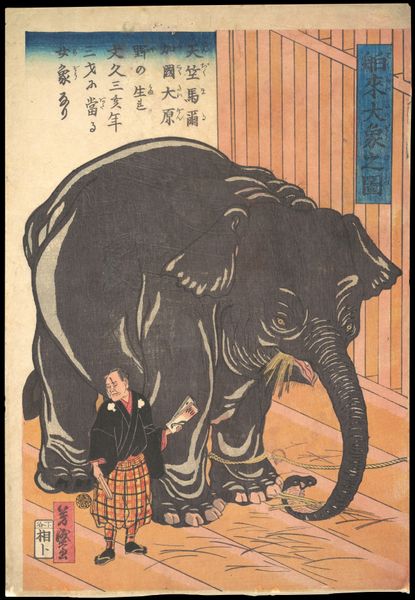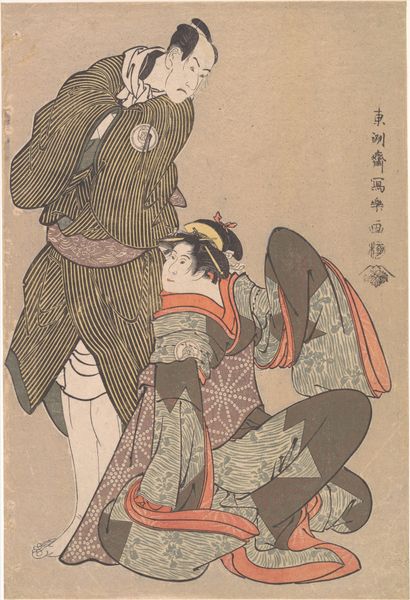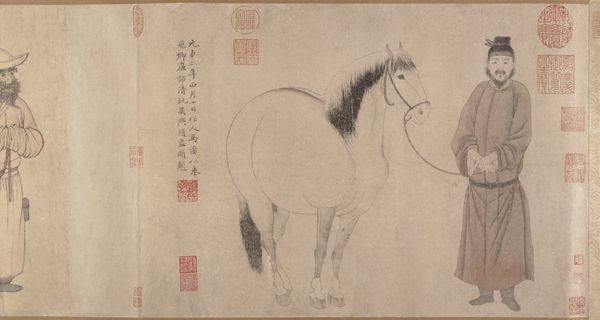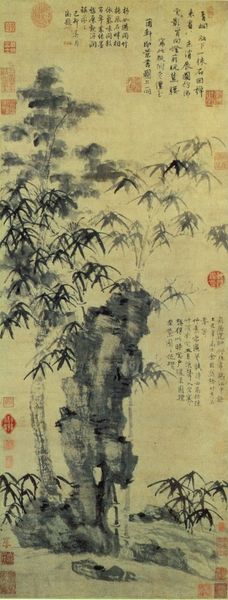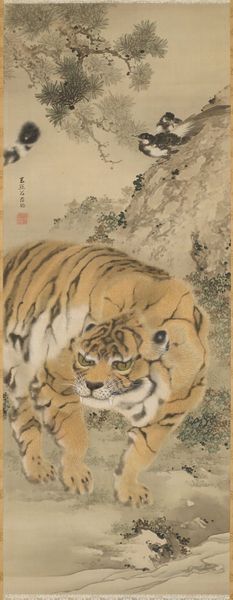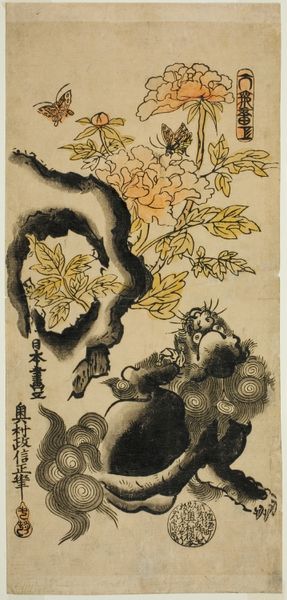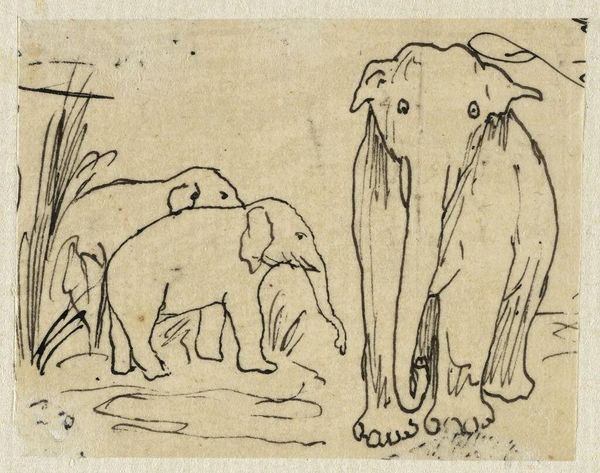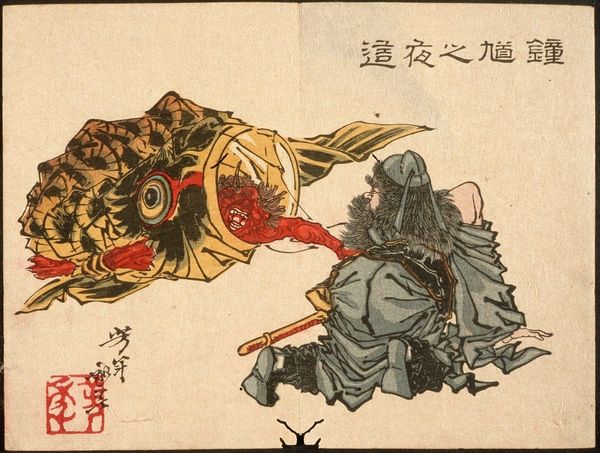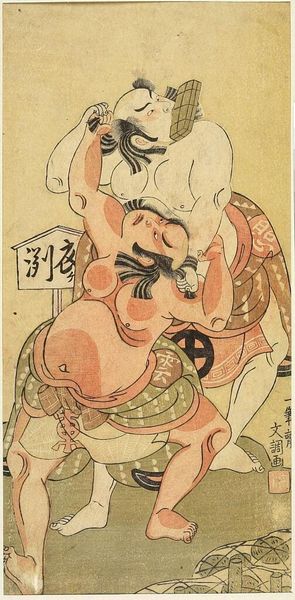
Diptych: Female Elephant from Central India (Tenjiku kudari daijÅzÅ no zu), published by Otakuya Takichi Possibly 1861
0:00
0:00
Dimensions: Paper: H. 36.3 cm x W. 48.5 cm (14 5/16 x 19 1/8 in.)
Copyright: CC0 1.0
Editor: Here we have IkkÅsai Yoshimori's woodblock print diptych of a "Female Elephant from Central India." It’s printed on paper, and I’m curious about the ropes around the elephant's feet. What does this imagery suggest to you? Curator: Note the means of production. This print was likely made for mass consumption. Consider the labor involved in carving the woodblocks, printing the image, and distributing it. This elephant becomes a commodity, its exoticism packaged and sold. Editor: So, the ropes might speak to the elephant's commodification as a spectacle or a symbol of power? Curator: Precisely. How does the materiality of the print—the paper, the ink—contribute to this understanding of the elephant's status? Editor: I see now; the print medium democratizes the image, making the 'exotic' accessible while simultaneously stripping the animal of its inherent wildness. Thanks!
Comments
No comments
Be the first to comment and join the conversation on the ultimate creative platform.
